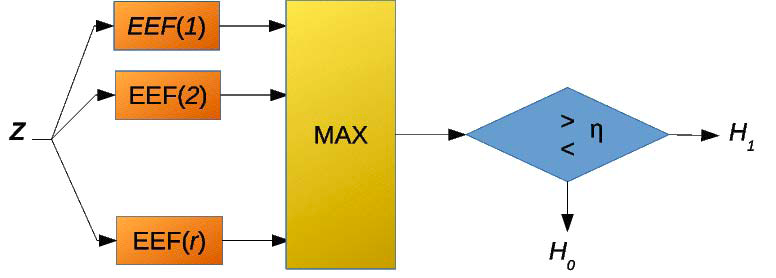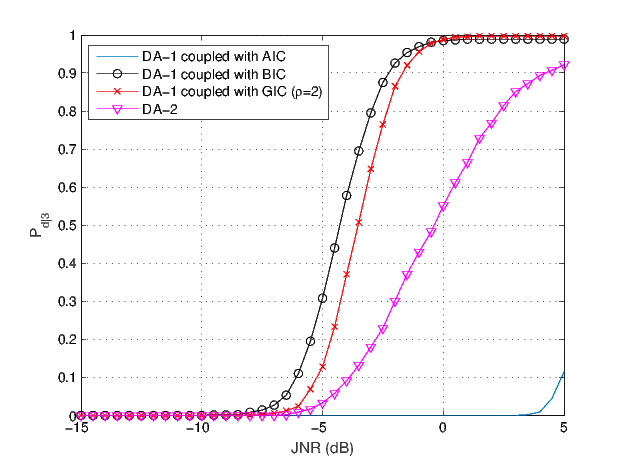In the radar applications, it is a critical problem that the detection performance of the system may weaken when the pulsed interferences (jammers) enter the antenna main lobe or side lobes. That is why Electronic Counter Measures (ECMs) and Electronic Counter-Counter Measures (ECCM), such as SLC and SLB, play an important role in the radar systems.
Aimed at improving the performance of detection in the environment with multiple jammers, Prof. HAO Chengpeng from the Institute of Acoustics (IOA) of the Chinese Academy of Sciences, together with researchers from Italy, proposed a new detection scheme based on Model Order Selection (MOS) rules and Modified Likelihood Ratio Test (MLRT), which guarantee the constant false alarm (CFAR) property.
The study was published in the 2018 5th IEEE International Workshop on Metrology for AeroSpace.
Accounting for the case where more than one Noise-like Jammers (NJs) and limited amount of data presented, if the maximum number of NJs assumed, MOS method is a possible approach to handle this issue.
Detection strategies for NJs might exploit the fact that, from the energy point of view, the NJs produce an increase of the eigenvalues of the entire Interference Covariance Matrix (ICM). Specifically, the problem is formulated in terms of a binary hypothesis test, where, under the null hypothesis, Reference Cells (RC) and Cells Under Test (CUT) share the same ICM, whereas under the alternative hypothesis, the ICM of CUT differs from that of RC by a rank-one modification representative of one NJ only. The Generalized Likelihood Ratio Test (GLRT) is applied to coming up with a rank-one modification detector.
Researchers proposed a new method to devise two adaptive architectures for multiple noise-like jammer detection. It contains a MOS-based stage and a MLRT detection stage. The former makes an inference on the number of jammers. At the same time, the latter architecture relies on the Modified LRT (MLRT), coming from GLRT, which jointly performs detection and order estimation.
As a final remark, the proposed method has been exploited to conceive two adaptive detection architectures capable of detecting and estimating the number of jammers. More importantly, they can guarantee the CFAR property with respect to the noise power.
Future research might concern the extension of this approach to the scenarios in the condition of joint attack of coherent interferers and NJs.

Fig.1 Architecture based upon MLRT

Fig.2 Probability of detection, assuming N=16, K=18

Fig.3 Probability of detection, assuming N=16, K=14
Link: https://doi.org/10.1109/MetroAeroSpace.2018.8453566
Reference:
Vincenzo Carotenuto, Chengpeng Hao, Danilo Orlando, Antonio De Maio, and Salvatore Iommelli. Detection of Multiple Noise-like Jammers for Radar Applications. 2018 5th IEEE International Workshop on Metrology for AeroSpace (MetroAeroSpace) DOI: 10.1109/MetroAeroSpace.2018.8453566
Contact:
WANG Rongquan
Institute of Acoustics, Chinese Academy of Sciences, 100190 Beijing, China
E-mail: wangrongquan@mail.ioa.ac.cn